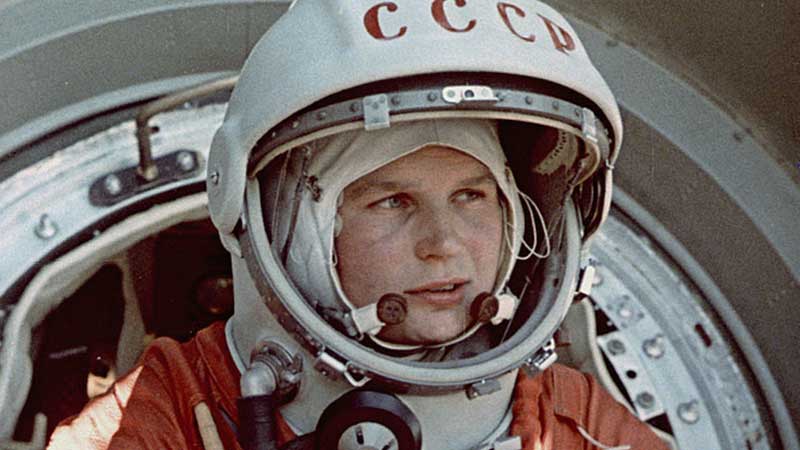First female astronaut: who is Valentina Tereshkova?
Tereshkova is an international role model. It has deeply affected women all over the world.

Born in Bolshoye Maslennikovo in the Soviet Union, Tereshkova finished school and got a job in a factory, and later studied engineering. Tereshkova, who was a paraglider as a hobby while studying engineering, did not know how useful it would be in the future.
She joined the Communist Party of the Soviet Union in 1961. In the space race between the Soviet Union and the United States, Tereshkova's mission was to become the first woman to go into space. So how did it all start?
Valentina Vladimirovna Tereshkova (born 6 March 1937) is an engineer, member of the Russian State Duma, and former Soviet cosmonaut. She is known for being the first and youngest woman in space, having flown a solo mission on the Vostok 6 on 16 June 1963.
Space race
Due to the Cold War between the United States and Russia, there was an unofficial Space Race between the two countries that lasted until 1975. The Space Race, which includes sending satellites into space and landing humans on the Moon, had become an important part of the cultural and technological rivalry between the Soviet Union and the United States during the Cold War. Space technology was used as a tool in the efforts of the two countries to demoralize each other before a possible hot war.
How Was The First Woman In Space Chosen?
In the early years of the Space Race, the Soviet Union's aim was to break new ground as much as possible. After Gagarin became the first human in space in 1961, the Soviets set their minds on sending a woman into space this time. This would allow them to gain prestige without creating new technology.
A fairly extensive study was launched to identify the first woman to go into space. The required qualifications were that the candidates should be under the age of 30, shorter than 170 cm, and weighing less than 70 kilograms, as well as being a paratrooper.
After Yuri Gagarin became the first man in space in 1961, Tereshkova volunteered for the Soviet space program. Although she did not have any experience as a pilot, she was accepted into the program due to her 126 parachuting jumps. Back then, when cosmonauts returned to Earth, they had to open their parachutes seconds before hitting the ground.
Tereshkova, along with four other selected women, underwent 18 months of training that included tests to determine how she would respond to non-gravity conditions. The training included weightless flights, parachute jumps, centrifugal tests, aerospace engineering, and piloting.
All five women became junior lieutenants in the Air Force in December 1962. At the age of 26, Tereshkova was chosen as the first woman to go into space, thanks to the public sympathy of her social group and her success in education.
Vostok 6 Space Flight
After the success of Vostok 5, Tereshkova began preparations for her own flight. On the morning of June 16, 1963, Tereshkova and her backup put on their spacesuits and set off for the launch pad.
After communications and life support checks, Tereshkova was placed inside Vostok 6. After a two-hour countdown, Vostok 6 launched flawlessly, making Valentina Tereshkova the first woman in space.
Tereshkova kept a flight log during this mission and took pictures of the horizon, which was later used to identify layers of aerosols in the atmosphere.
Vostok 6 recorded more flight times in a single flight than the combined times of all American astronauts who had flown before that date.
Although Tereshkova experienced nausea and physical discomfort for most of the flight, she orbited the earth 48 times and spent 2 days, 22 hours, and 50 minutes in space. As planned for all Vostok missions, Tereshkova parachuted into northeastern Kazakhstan.
When they returned, Tereshkova was greeted with millions of flowers. In front of thousands of attendees, the Prime Minister presented the Hero of the Soviet Union medal. Tereshkova became a national and international role model after her appointment, took part in many women's congresses, and traveled the world. She received congratulatory letters from around the world and deeply impressed women in other countries.
Tereshkova never flew into space again; but after her flight she became a test pilot and instructor, thus earning her doctorate in technical sciences.
Tereshkova, who is a deputy and head of the Soviet Women's Committee, also chaired the International Union of Culture and Friendship. In the following years, she took part in many different political positions. She remained politically active even after the collapse of the Soviet Union and is still seen as a hero and role model in post-Soviet Russia.
